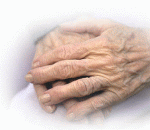Geriatrics
|
21 october 2014 02:21:48 |
| Factors affecting the survival probability of becoming a centenarian for those aged 70, based on the human mortality database: income, health expenditure, telephone, and sanitation (BMC Geriatrics) |
|
Tweet Background:
What are the factors that affect the survival probability of becoming a centenarian for those aged 70? Do the factors include income, health expenditure, the use of mobile telephones, or sanitation? The survival probability of becoming a centenarian (SPBC) is defined as an estimate of the production of centenarians by a population. The SPBC (70) is the survival probability of becoming a centenarian for those aged 70. This study estimates the associations between the SPBC (70), and the gross national income, health expenditure, telecommunications, and sanitation facilities in 32 countries.
Methods:
The socioeconomic indicators for this study were obtained from the database of the United Nations Development Programme. In addition, the data for the analysis of centenarians in 32 countries were obtained from the Human Mortality Database, which is maintained by the Department of Demography at the University of California, Berkeley, USA, and the Max Planck Institute for Demographic Research in Rostock, Germany. Associations between socioeconomic indicators and SPBC (70) were assessed using Pearson`s correlation coefficients and multiple regression models.
Results:
Significant positive correlations were found between the SPBC (70), and the socioeconomic factors of gross national income (GNI), public expenditure on health as a percentage of gross domestic product (PEHGDP), fixed and mobile telephone subscribers (FMTS) as the standard of living, and improved sanitation facilities (ISF). Overall, the SPBC (70) of female and male predictors were used, in order to form a model production of centenarians, with higher GNI and PEHGDP, as well as higher FMTS and ISF as the socioeconomic factors (R2= 0.422, P< 0.001).
Conclusions:
The socioeconomic level in all 32 countries appears to have an important latent effect on the production of centenarians in both females and males. This study has identified the following four important aspects of socioeconomic indicators in the survival probability of becoming a centenarian for those aged 70: higher overall economic development level, public expenditure on health, mobile telephone subscribers as the standard of living, and the use of improved sanitation facilities for healthy aging. Thus, the socioeconomic level seems to affect an important on the survival probability of becoming a centenarian. |
| 169 viewsCategory: Geriatrics |
 Contributions of ambient assisted living for health and quality of life in the elderly and care services - a qualitative analysis from the experts` perspective of care service professionals (BMC Geriatrics) Contributions of ambient assisted living for health and quality of life in the elderly and care services - a qualitative analysis from the experts` perspective of care service professionals (BMC Geriatrics)How are falls and fear of falling associated with objectively measured physical activity in a cohort of community-dwelling older men? (BMC Geriatrics) 
|
| blog comments powered by Disqus |
MyJournals.org
The latest issues of all your favorite science journals on one page
The latest issues of all your favorite science journals on one page



